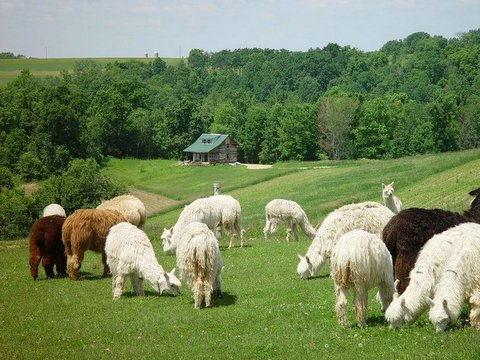 |
 |
      |
 |





|
|
Alpacas

Alpacas were domesticated from the Vicuna by the Incan civilization for the purpose of owning an elite fiber producing animal. Suri alpacas were first brought to the United States in 1991. Importations have brought Suri alpacas from Bolivia, Chile and Peru, giving U.S. Breeders access to genetic material from all three Suri alpaca-producing countries in South America. Alpacas gentle nature, their extraordinary intelligence, ease of breeding and adaptability make them a unique animal to own.
There are two types of alpacas: the Suri, which has a lustrous fine fiber with no crimp and the Huacaya, whose fleece has a crimp or wavy quality. The Suri alpaca fiber grows parallel to the body while hanging in long, separate, distinctive locks. Its artistic style enhances the graceful appearance of the animal compared to the soft, woolly look of the Huacaya alpaca. The world population of alpaca is approximately 85% Huacaya and 15% Suri. Alpacas fiber is superior to cashmere and the finest merino wool.
The alpaca industry has one of the most sophisticated animal registries in existence. Virtually all of the alpacas in North America are registered. The registry protects the existing gene pool and helps ensure that each breeder's investment is also protected from cross breeding with llamas and guanacos.
There is no greater delight than owning animals which are as intelligent, charming and beautiful as alpacas. They are truly the world's finest livestock investment.
|
|
| Copyright Rolling Acres Alpacas, All rights reserved 2006 |
enDev, LLC |
|
|